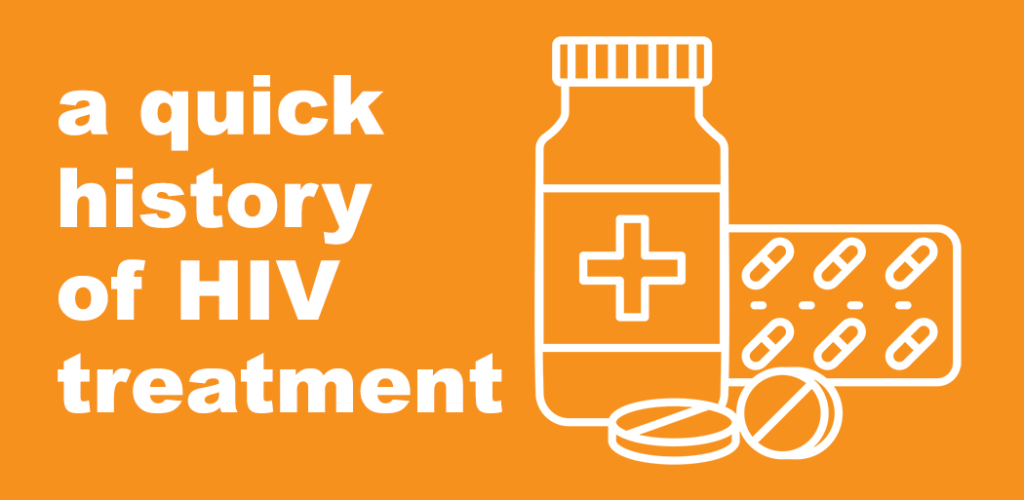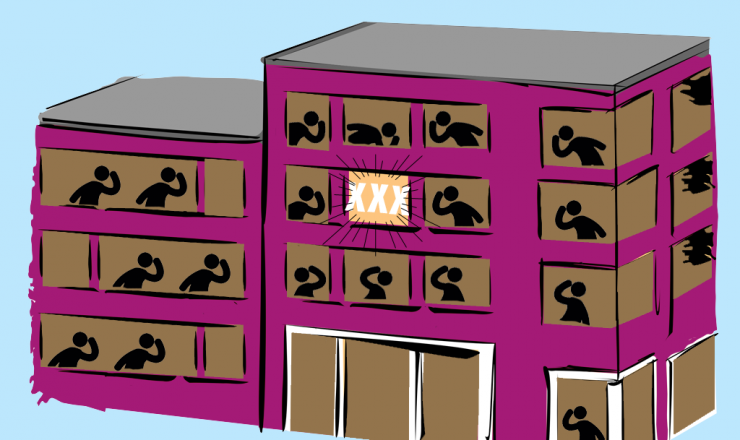

This article provides a quick background on the history of treatments for the Human Immunodeficiency Virus (HIV). To learn more about the virus itself, check out our article on HIV!
From the Canadian Foundation for AIDS Research (CANFAR):
Scientists believe that HIV originally came from a virus particular to chimpanzees in West Africa during the 1930s, and originally transmitted to humans through the transfer of blood through hunting. Over the decades, the virus spread through Africa, and to other parts of the world.
In the early 1980s, scientists in the US began noticing rare types of pneumonia, cancer, and other illnesses occurring at higher than normal rates among young gay men. Initially this lead to it being called Gay-Related Immune Deficiency (GRID), because of it mostly happening in gay communities. They would eventually see cases among injection drug users by the end of 1981.
1982 is a big year for HIV. First, GRID is renamed Acquired Immune Deficiency Syndrome (AIDS), and later researchers learn that it’s caused by HIV. It is realized that HIV can be transmitted by sexual activity. Canada reports its first case in March, though once there is a better understanding of AIDS, it is later identified that Canada’s first case was probably back in 1979. Cases are reported among haemophiliacs and blood transfusion recipients. By 1983 it is learned that people of all genders can become infected.
In 1987, Azidothymidine (AZT) was introduced as the first treatment for HIV. AZT is an antiretroviral drug that is used in combination with other anti-HIV drugs to treat (but not cure) HIV. AZT works to block enzymes that HIV needs to replicate, thereby stopping or slowing the progression of the virus so it doesn’t get worse. AZT was a huge help at the time but it also has some harsh side effects, especially with long-term use.
By 1990 it was estimated that 8-10 million people worldwide were living with HIV. AIDS was a leading cause of death, especially among young men. HIV began mutating and changing, and eventually AZT became less effective as a treatment. Eventually drugs like Saquinavir and Nevirapine were introduced, which worked similarly to AZT. Using drugs in combination to treat HIV is known as Combination Therapy or Highly Active Antiretroviral Therapy (HAART). Though this was very effective, HAART required taking lots medications, and dealing with related side-effects. While this was effective for treating HIV, this path can also take a toll on a person’s physical and mental health. Eventually drugs like Combivir were introduced, which were a combination of two antiretroviral drugs in one, which helped make taking medications easier.
In 2002 HIV became the leading cause of death worldwide for people ages 15-59. Point-of-Care Testing was approved in Canada in 2005. This is a rapid test that checks for HIV antibodies, which are created when a person has HIV in their system. The tests give accurate results within 2 minutes.
It is also during the 2000s when Post-Exposure Prophylaxis (PEP) starts getting wider approvals for use, though it was first pioneered in the late 90s. PEP is a set of 3 medications you can take if you have recently been exposed to HIV to help lower your risk of getting it. Check out our article on PEP for more information.
PrEP, which is short for Pre-Exposure Prophylaxis, is approved in 2012. This in an HIV prevention drug that lowers the risk of a person contracting the virus ahead of time. Check out our article on PrEP for more information. Truvada, a generic version of PrEP, is approved in Canada in 2017.
In 2016, the U=U campaign launched, to bring greater awareness to the fact that when someone living with HIV is on effective treatment, it will suppress the virus in their blood to a level that is too low to be measured by lab tests. This is called having an undetectable viral load. When someone living with HIV is on treatment and has an undetectable viral load, they can’t transmit HIV to their sexual partners. Their HIV is untransmittable. Undetectable = Untransmittable. Check out preventionaccess.org for more info on the campaign.
In 2020, Canada becomes the first country to approve the first injectable HIV drug, Cabenuva. Cabenuva is a combination of two anti-HIV drugs that, after consulting on a treatment plan with a medical professional, a person with HIV can have injected every 1-2 months.
Also in 2020, Health Canada approves the INSTI HIV Self-Test, which allows people to do HIV testing outside of clinics and hospitals.
Currently, following the advancements of mRNA vaccines for preventing COVID-19, pharmaceutical companies are beginning trials for an mRNA-based HIV vaccine.
Even though HIV testing and treatment have come a long way since the beginning of the AIDS Epidemic, people living with HIV still deal with many barriers to accessing adequate health care, including things like legal worries, expensive treatments not being covered by insurance, and stigma from community and health care workers.
If you have questions about this topic, feel free to contact one of our peer educators. [Link]
Last Updated: May 2022

Whether it’s a broken condom or surprise roommates coming home, what are people supposed to do when sex doesn’t end up happening? We’ve come up with a few suggestions of fun alternatives! Check them out!

Heat + moisture/sweat + friction = Chub Rub! This post is all about our least favourite sign of summer: thigh rash.

Sometimes the hardest thing about having sex is just getting some privacy. But how do you do that if you don’t live alone? In this post we explore what you can do to navigate having sex if you live with family or roommates.